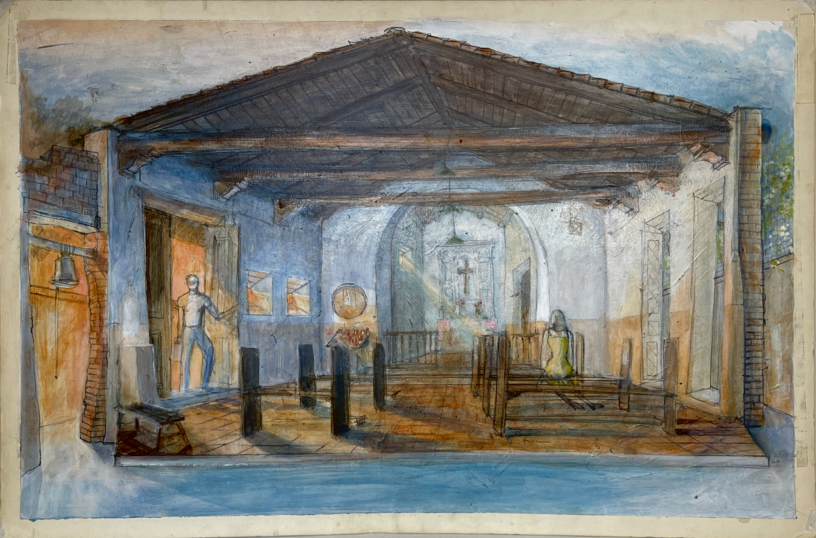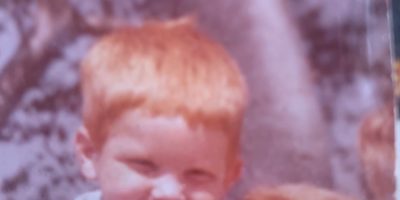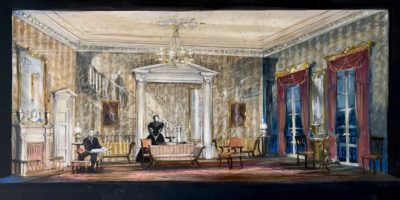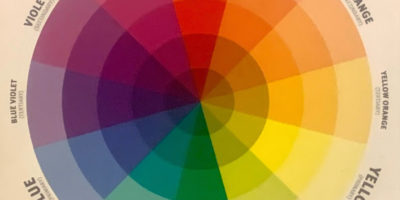Circle Repertory Company was a collective of directors, writers, designers, actors, and technicians. There was something called a ‘Circle Rep actor,’ and there was something called a ‘Circle Rep play.’ Over all of them were the productions of our playwright Lanford Wilson. It was a totally collaborative experience, working for love of what we were doing. For the first part of my career, lucky me, I became known as a ‘Circle Rep designer.’
Marshall W. Mason, Artistic Director of Circle Rep, directed all of Lanford Wilson’s plays and I was fortunate always to be the designer. It didn’t take much to get me going on the scenery for Angels Fall and Redwood Curtain.
To my great delight, both Angels Fall and Redwood Curtain two then new plays by Lanford, took place in the West. Born in California, I was thrilled that scenes from my early life of western travel were appearing onstage. It was a great rarity. Lanford’s plays usually took place in New York or Missouri, to generalize, and very few new American plays ever were written to take place very far west of the Mississippi. Very few. Years later I was to be excited to find that Jon Robin Baitz’s new play Other Desert Cities was to take place in Palm Springs. At least Lanford was a completely American writer and the plays were of this country. I always loved hearing the speech he recreated: he could make well-observed regional American English sing.
Enlarge
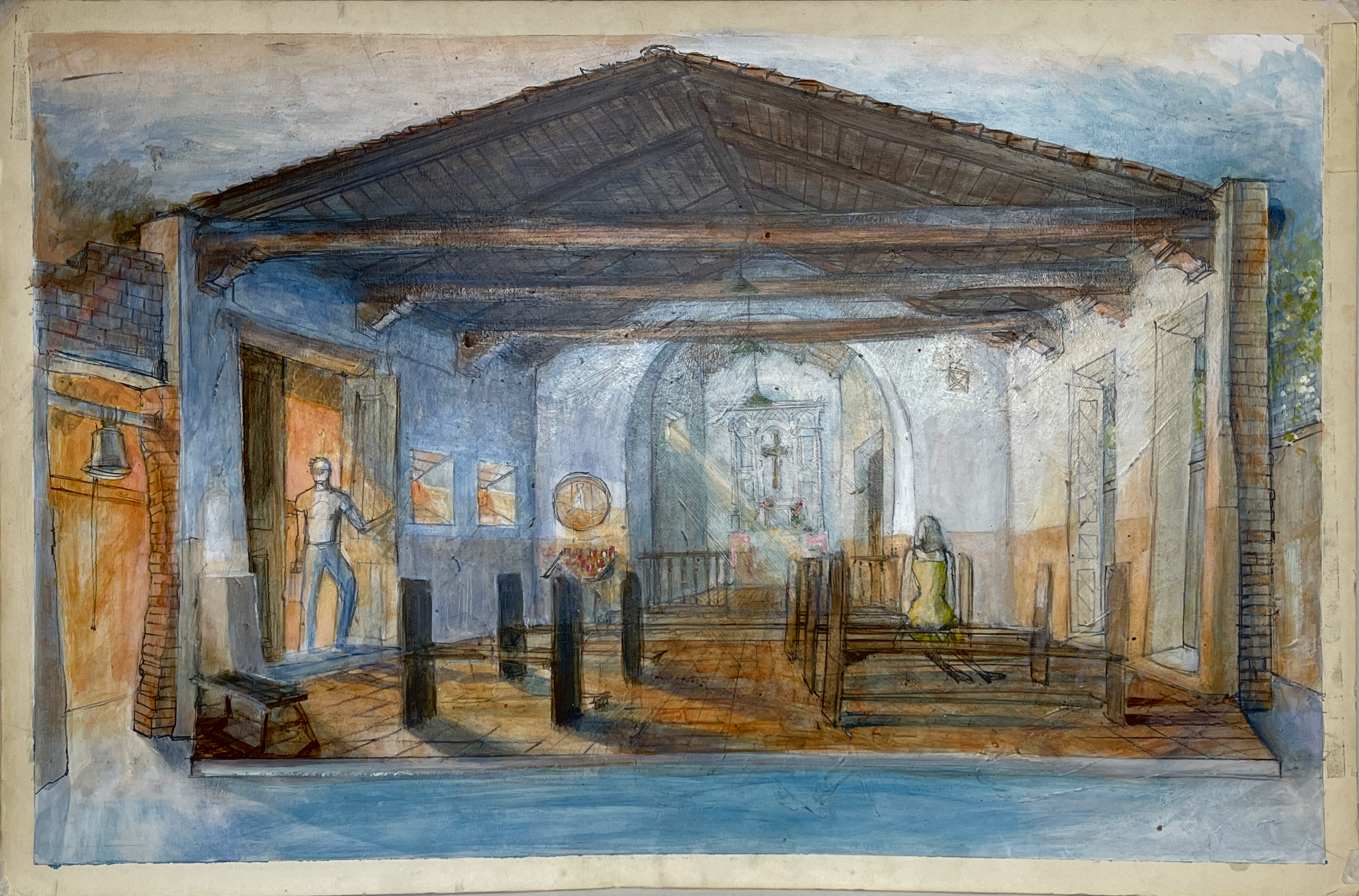
ORIGINAL SKETCH BY JOHN LEE BEATTY
Angels Fall took place in an Indian mission in New Mexico. That’s quite different than the grander California missions of Junipero Serra. I knew that already. And I had been in, and felt, small unpretentious ‘lost’ missions already. I knew what it felt like to inhabit them — a great head start which affected the whole design. I don’t say ‘whole’ casually, as lighting and sound were immediately affected. My feeling of the softly lit, remote and silent mission chapel changed everything. The first choice was to muffle the floor by making the terra cotta tiles out of terra cotta colored carpet. Footfalls were almost totally eliminated. The walls were solid and were made of heavily plastered velour. The climatic bell ringing was truly shocking in contrast to the silence of the interior. A full roof challenged the lighting designer, as did having no side light slots except the deep tiny windows. The heavy doors blocked out the glaring sun and heat as well. The wooden beams of the ceiling were cleverly outfitted with hundreds of ‘inkies’ which were very small, diffuse ‘Fresnel’ lensed lighting instruments. That was all that could be hidden in the days before LED tape. Wonderful Dennis Parichy, the lighting designer rose to surpass the challenge—the interior of the mission chapel had a wonderful, beatific ambient glow of light just like I had felt in my childhood visits to missions. Without the audience seeing a single lighting source, the actors and the chapel glowed. A shockingly red orange sunset pierced the wall openings, just the color we called in dusty California, ‘Los Angeles is burning up’ — a good big western sunset.
Enlarge
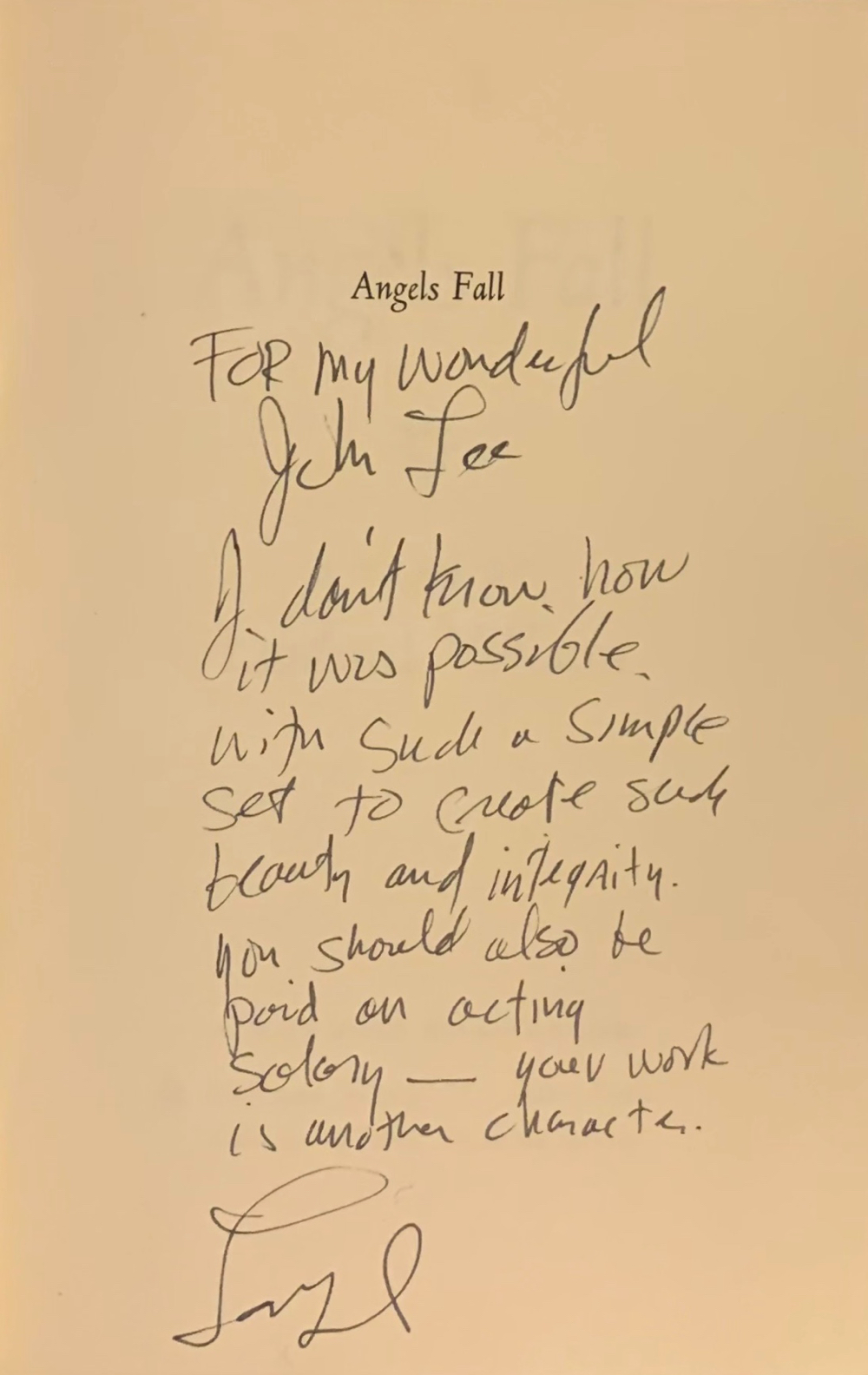
LETTER FROM LANFORD WILSON TO JOHN LEE BEATTY
The Angels Fall set changed a bit as we first premiered in Miami, went on to Saratoga, then came to Circle Rep in the Village, and then ran all too briefly at the Longacre Theater on Broadway. The set improved every time. Each change to the set was a ‘felt’ one. I instinctively went forward more deeply creating this remote western mission chapel.
Redwood Curtain, the setting of the second play, evoked early childhood memories taking place as it did in the Redwood forest of semi-coastal Northern California. Redwoods were huge and exciting to me as a child of five, and they still awe me as an adult. The Redwoods are the grand survivors of our past, witnesses of an earlier America. It seemed to me that every setting of a Lanford Wilson play took place in the ruins of our American past.
Enlarge
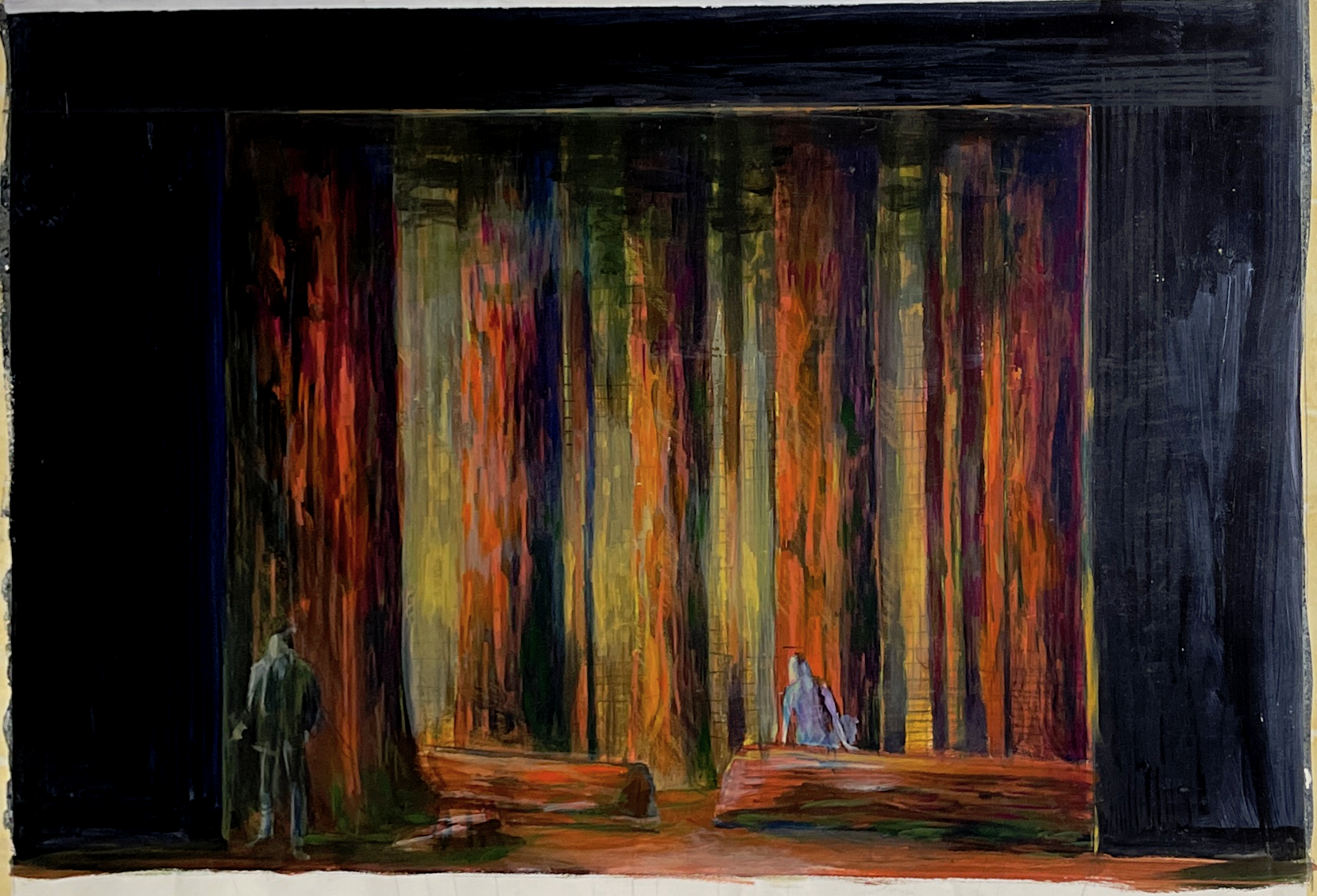
ORIGINAL SKETCH BY JOHN LEE BEATTY
The hard part of designing this multi-scene play was that Lanford conceived it and wrote if for a large theater. Our Circle Rep black box theater space was very limited. The play not only involved a visit to the Redwood Forest but also required a full grand piano in a grand mansion, plus a scene inside a car, and another small scene in a cafe. It was not possible to fit all this in our off-Broadway theater. So we found our first home at Seattle Rep, a big proscenium space, Broadway-sized.
Before we went to Seattle, Debra Monk (the actress in the play who would go on to win the Tony for her remarkable performance) opined that a redwood was “so big that a grand piano could fit inside it.” Well, that off-hand comment was the solution. The ground plan of twin revolves, side to side, presented a forest that literally hid a Craftsman-style California music room inside its giant trunks.
The trees were made of thick velour, shredded velvet, and raw silk over enormous carved foam cylinders. Since we were telling the story of a Vietnam vet lost in the woods, I also researched Vietnamese textiles as a starting point, and the gold-leafed backdrop certainly brought the East to the West. The most thrilling scenic moment occurred late in the show. The entire Redwood forest started to slowly rotate and the marching trees gradually transformed into a room with a huge grand piano. A rather profound sight.
Enlarge
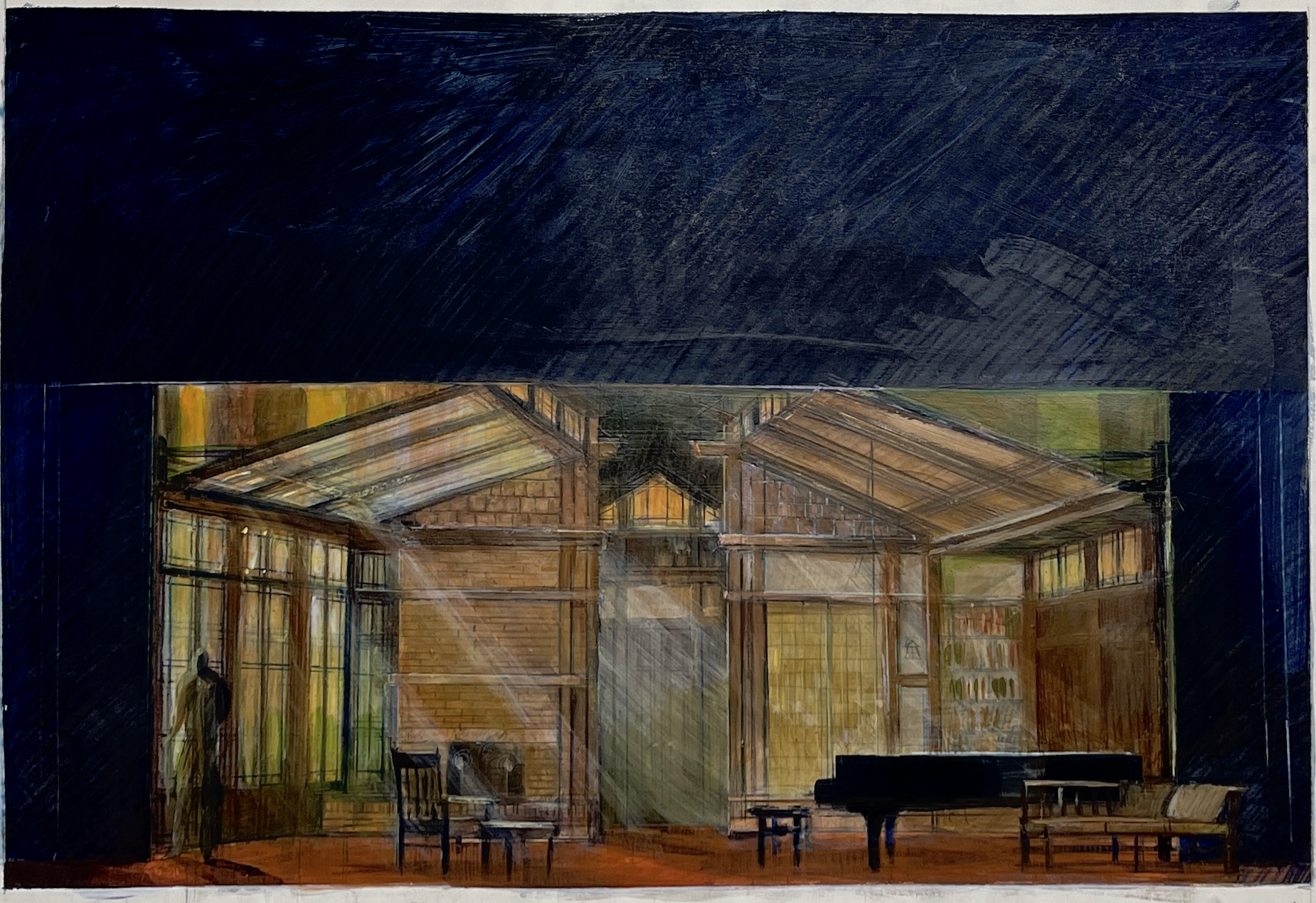
ORIGINAL SKETCH BY JOHN LEE BEATTY
As spectacular as this production was with its moving forest and large set, this was an imperfect small play. The set was dreamily appropriate in some stretches, and then just too much as we tried to create cars and cafes using winched panels and theatrical effects. Did I mention lots of coastal fog and that there was also a live dog? There was also an Asian child piano prodigy playing Eric Satie. These elements were certainly very, very specific. The play was not exactly accurate in its ‘realism.’ There were disparate elements that I couldn’t reconcile. The huge Redwood trees competed with the small interior of a car, and the Redwood trees won.
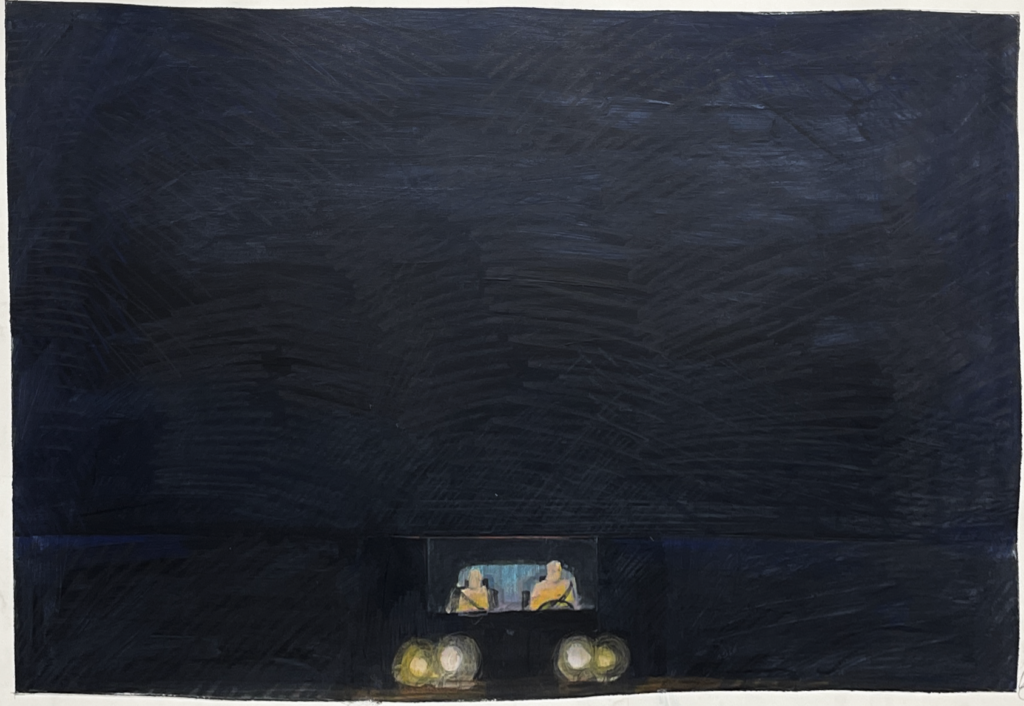

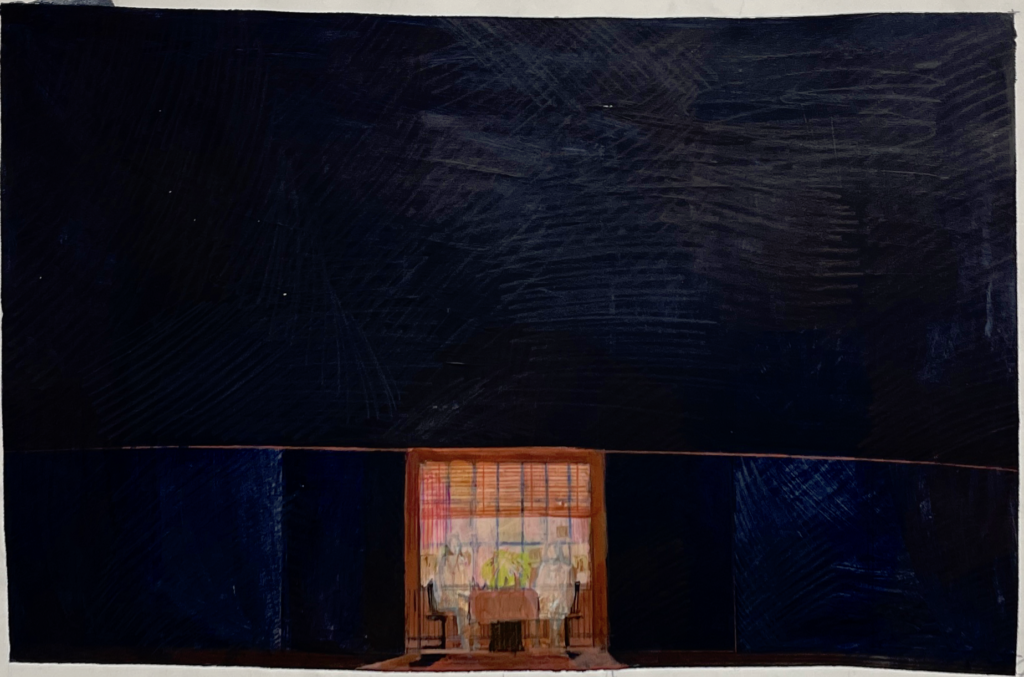
A Car and a Cafe: Redwood Curtain
Redwoods, in fact are two or three times larger than the ‘huge’ scaled-down scenic elements I designed. I added a canopy of redwood branches to keep the scale in a human range. And car interiors, which are always a problem onstage — as we’ve seen them in too many movies, but always in close up — are not proportional on a large stage.
Long after our short stay on Broadway, a reading was held — with no scenery at all. No redwoods. Smaller, simpler, not pictorial. I liked my scenery, but I can imagine Redwood Curtain without the redwoods too.
Maybe.
____________________________________________________________________________________________________________________
